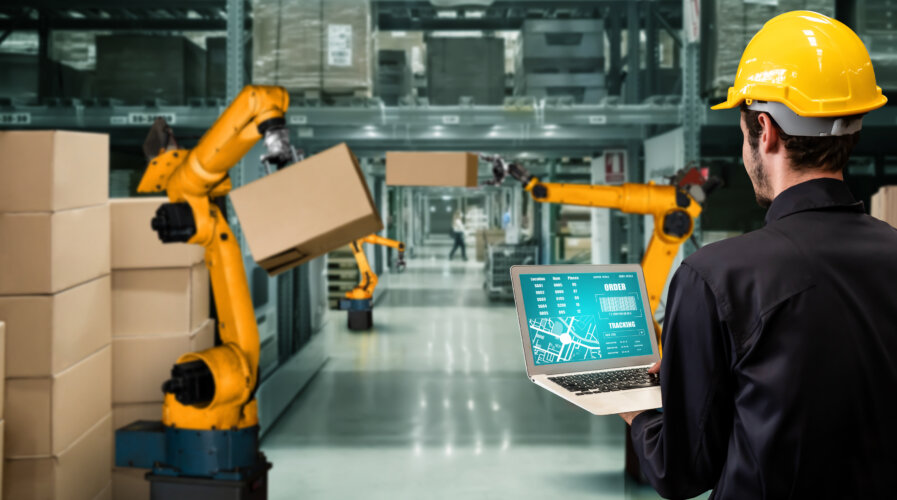
(Source – Shutterstock)
APAC businesses will embrace cloud and AI to build resilient supply chain ecosystems
|
Getting your Trinity Audio player ready... |
Article by Andy Ng, Vice-President and Managing Director for Asia South and Pacific Region, Veritas Technologies
The volatility of energy prices and disruption of the supply chain will continue to be a major concern in 2023, with countries that participated in the East Asia Summit 2022 recognizing the need to strengthen regional cooperation amid ongoing geopolitical challenges, military conflicts and economic uncertainty.
While there have been signs of a reversal in the global chip shortage and lowering of freight costs from the record-high pandemic levels, organizations are not returning to their old ways of doing business after being hit with a hard lesson. The unprecedented impact of the global pandemic has illustrated the pitfalls of supply chain dependencies, spurring businesses to improve their supply chain resilience to weather any future storms.
Double down on supply chain resilience through cloud-based solutions
Organizations will certainly be looking to strengthen their supply chain resilience, planning ahead and preparing for the next disruptive wave, should it happen again. The question for them becomes what is the best way to do that? According to a recent Gartner survey, 61% of respondents agree that technology is a source of competitive advantage across industries.
Software has been at the forefront of innovation. However, a lack of hardware availability due to geopolitical restrictions and increased customs regulations will make it challenging for vendors to deliver new solutions quickly. As such, businesses have struggled to implement software and hardware together to create functional solutions. To counteract these supply chain woes, we expect businesses to embrace cloud-based solutions – with hardware and software already bundled together – rather than having to manage multiple relationships and wait for the hardware to arrive.

(Source – Shutterstock)
In this way, businesses can bolster digitalization and also reduce their reliance on legacy technologies that are often inflexible and expensive to run. By leveraging cloud-based solutions to enhance their digital capabilities, businesses will be better able to ensure business continuity by responding more quickly and accurately to the needs of their customers with greater agility and flexibility.
AI-based automation will drive operational efficiency for supply chain management
Talent gaps across the supply chain and operations remain a key challenge across different industries. With the boom in e-commerce brought about by technology platforms and the surge in home deliveries that is likely to endure even as we move into a post-pandemic era, fulfilment centers have been working at full tilt.
Organizations that turn to AI-based process automation and leverage intralogistics technologies – to streamline supply chain management – will have a distinct competitive advantage over others, such as reducing the need for so many workers and shorter product time to market.
According to Gartner, 75% of large enterprises will have adopted some form of intralogistics smart robots in their warehouse operations. By utilizing AI and a mapping system to autonomously pick, transport and deliver materials within the warehouse and distribution centre environments, smart robots will eliminate tedious tasks and alleviate manpower constraints.
Done right, AI-based automation will enable organizations to reset their logistics operating models with digital capabilities and innovation to increase operational efficiency and effectiveness.
More scrutiny on digital supply chain spending in 2023
The cloud supply chain market is predicted to grow at CAGR of 11.09% from 2022 to 2027. With the advent of the global pandemic, many organizations have evolved their supply chain planning and operations by accelerating the adoption of cloud-based supply chain technologies to accommodate the amplitude of volatility and speed of unexpected disruptions.
However, as geo-political factors and surging inflation continue to put pressure on global supply chains, we expect businesses to look at taking control of costs with more scrutiny on digital supply chain spending. Organizations that are doubling down to rethink their digital supply chain model, such as deploying autonomous cloud-based solutions to maximize data visibility across the entire ecosystem – spanning from demand, end-to-end inventory, capacity and ancillary functions such as finance and freight payment – will achieve greater agility.
The global pandemic has clearly underscored the growing demand for reliable and accessible cloud supply chain technologies. To help organizations in the APAC region to navigate the IT complexities for post-pandemic recovery, having autonomous, cloud-first optimized solutions with the flexibility to manage the entire data protection estate, on-prem and in the cloud, from a single pane of glass is essential. By integrating the web of systems and data for suppliers, manufacturers, outbound carriers, distributors and eventually customers with cloud-based solutions, workflows can be conducted in a more cost-effective and efficient manner.
With many economists predicting a downturn, businesses are certainly in for a bumpy ride. Businesses in the APAC region must be better prepared to turn the headwinds into tailwinds by strengthening their supply chain resilience with the use of AI through intelligent cloud-based platforms and solutions.
The views in this article are that of the author and may not reflect the view of Tech Wire Asia.
READ MORE
- Safer Automation: How Sophic and Firmus Succeeded in Malaysia with MDEC’s Support
- Privilege granted, not gained: Intelligent authorization for enhanced infrastructure productivity
- Low-Code produces the Proof-of-Possibilities
- New Wearables Enable Staff to Work Faster and Safer
- Experts weigh in on Oracle’s departure from adland


